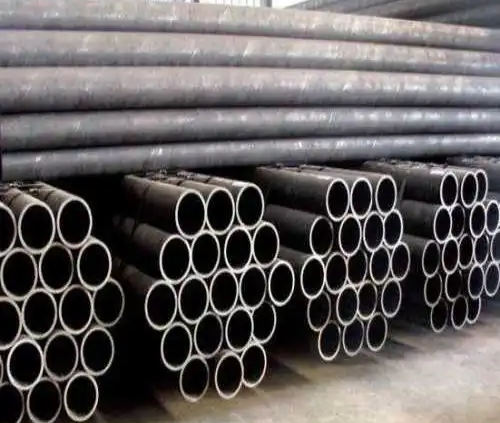Welding of nickel-based corrosion-resistant alloy Incoloy800
Nickel-based corrosion-resistant alloy Incoloy800 has been more widely used in the petrochemical industry in recent years, a corrosion-resistant material, especially in the expansion joint selection is widely used, and the welding process directly affects the service life of equipment components.
1. Incoloy800 alloy weldability analysis
Incoloy800 alloy is a small amount of aluminum and titanium Ni-Cr-Fe austenitic metal materials, with corrosion resistance, high strength, and resistance to high-temperature oxidation properties, weldability is good.
1.1 thermal cracking problem
Incoloy800 welding thermal cracking is caused by metallurgical factors and process factors, which are dominated by metallurgical factors.
Incoloy800 alloy welding, due to S, Si, and other impurities in the weld metal segregation, S and Ni form Ni-NiS low melting point eutectic, in the solidification process of the weld metal, this low melting point eutectic in the formation of a liquid film between the grain boundaries, the formation of intergranular cracking under the action of welding stress. In the welding process Si and oxygen and other complex silicates, form a layer of brittle silicate film between the grain boundaries, during the solidification of the weld metal or after solidification of the high-temperature zone, the formation of high-temperature low plasticity cracking. Therefore, S and Si are the most harmful elements in Incoloy800 alloy.
Incoloy800 alloy has poor thermal conductivity, welding heat is not easy to dissipate, there is easy to overheat, resulting in coarse grains, so that the intergranular interlayer thickens, weakening the intergranular bonding force, but also makes the weld metal liquid solid longer, promoting the formation of thermal cracks.
1.2 Pore problem
Welding Incoloy800 alloy may produce H2O pores, H2 pores, and C0 pores.
Welding Incoloy800 alloy, if the workpiece bevel and its nearby oil and dirt are not clean, a large number of H2 is into the welding pool, when the melt solidification of hydrogen gas can not escape, the formation of hydrogen pores; weldings, such as poor protection, oxygen in the air into the melt pool and the formation of carbon in the metal CO pores; welding, the liquid molten pool of nickel metal can fuse a large amount of oxygen, solidification of oxygen solubility greatly reduced, excess oxygen and nickel NiO, NiO, and nickel H2 reaction, nickel is reduced, hydrogen and oxygen H2O, H2O in the molten pool solidification too late to escape and produce H2O porosity, which is the most likely to appear when Incoloy800 alloy welding porosity.
2. welding test
2.1 test material using foreign imports of Incoloy800 alloy plate, welding test plate length 600mm, width 300mm, thickness 6mm, V-shaped single-sided bevel.
2.2 welding materials used with Incoloy800 alloy composition equivalent argon arc welding wire. Welding wire grade TEW21/33/SG.
2.3 Welding method using heat concentration, gas protection effect of manual tungsten arc argon welding.
2.4 welding process
2.4.1 Weld cleaning before welding should be welded bevel and the nearby oil cleaned, especially lead, sulfur, phosphorus, and some low melting point elements of dirt, the joint will be cleaned on both sides of the 50mm range, cleaned with acetone, and then rinsed with clean water, and so the bevel and both sides dry before welding.
2.4.2 electrode using a flat head conical electrode can ensure arc stability and obtain a sufficient depth of melt, flat head diameter of about 0.4mm, and conical top angle of 30 ~ 45 °. During the welding process, if the tungsten electrode and molten pool contact, the head is contaminated, and must be worn off or replaced with the tungsten electrode, while the molten pool metal is contaminated, the local weld should also be worn off to prevent tungsten defects.
2.4.3 Protective gas with argon as a protective gas, the purity should be more than 99.9%, the reverse side of the welding first pass argon, the flow rate of 12L/min or more, to ensure full weld penetration and weld forming, and to prevent oxidation. In order to strengthen the protection effect of the welding area, the rear side of the welding nozzle plus a protective shield.
2.4.4 operation points to choose a small current, short arc, and as fast as possible welding speed; welding process, the heating end of the wire must be in the argon protection, the wire does not swing laterally, can not stir the molten pool with the wire; multi-layer welding should be strictly controlled at 100 ℃ or less, after welding a, to be cold to the workpiece can be touched by hand and then weld the next channel; to prevent arc pit cracking, arc break to arc pit processing, the final arc break The arc pit must be filled or led out of the arc pit.
2.5 test results
2.5.1 According to technical requirements, Incoloy800 alloy welded joints according to GB150-98 “National Standard for Steel Pressure Vessels” for inspection, manufacture, and acceptance.
2.5.2 Incoloy800 welded joints test results are as follows: the appearance of the weld is checked without porosity, cracks, arc pits, slag, and other defects; weld by 100% X-ray flaw detection, all Ⅰ.
Test plate ends as required to round off 30mm, intercepted tensile specimens 2, specifications for 250 × 25 × 6; face bending, back bending specimens each 1, specifications for 150 × 30 × 6; metallographic specimens 6, specifications for 20 × 10 × 6.
After the test on the specimen, the results of the tensile specimen tensile strength of 714MPa and 720MPa, respectively; bending specimens bent 180 ° without any cracks or defects; weld, welding heat-affected zone metallographic specimens are austenite plus less than 2% of the ferrite, without any overburning organization and coarse grain composition.
Incoloy800 alloy welded joints test results and the standard requirements compared, the welded joints meet the standard requirements. This proves that the welding process is feasible.



